For Sale: An East German Trabant 601 – “The Worst Car Ever Made”
This is a Trabant 601, by far the most prolific of the 3.7 million Trabants ever made. Known as the “Trabbi” in its native East Germany it was nicknamed “the worst car ever made,” and was often comically referred to as the “saxon Porsche,” “running cardboard,” or “the spark plug with a roof.”
Despite its somewhat unflattering reputation the Trabant is now almost universally loved in its native Germany, with classic car clubs keeping thousands of them on the road – good examples now sell for figures that would have seemed utterly impossible to the average East German back in the 1960s.
Fast Facts – The Trabant 601
- The Trabant was developed in the mid-1950s and for the time it was a relatively advanced car, with a steel unibody chassis, a composite plastic Duroplast body, independent front and rear suspension, and front wheel drive.
- The car was offered over four generations between 1957 and 1991, starting with the Trabant P50/500 followed by the Trabant 600, Trabant 601, and ending with the Trabant 1.1. Of these the 601 was the longest lived, running from 1964 to 1990.
- The Trabant was largely unknown in the West until the fall of the Berlin Wall in 1989. Many thousands of Trabants crossed the border full of beaming East Germans, and as a result the car became a core element of this period’s zeitgeist.
- Power was provided by an antiquated air-cooled, two-cylinder, two-stroke engine. Capacity was slightly increased over time but even at its most powerful it only made 23 hp – enough for a 21 second 0-60 mph time.
The Terrible, Wonderful, and Wonderfully Terrible Trabant
Despite its famously subpar build quality, low top speed, terrible tailpipe emissions, and almost comical unreliability, the Trabant always had a 10 to 13 year waitlist for prospective new buyers. This was due to the economic stranglehold that held East Germany back far behind its neighbors on the other side of the Berlin Wall.
Above Video: This clip from MotorWeek talks a little about the Trabant, with host Steven Chupnick talking about his own personal Trabbi.
East Germans would often place an order for a Trabant either when their baby was born or when their child first entered school, this way by the time the child was a young adult their car might be ready for delivery.
Back in the late-1950s when the Trabant was introduced there were high hopes for the car, at this time the Soviets were winning the space race with Sputnik reaching space in 1957 – the same year the Trabant was introduced.
The word “trabant” is derived from the Middle High German word “drabant” which means “satellite.” The car was named to celebrate the success of Sputnik and the presumed success of communism over capitalism, though within a few short years it would become a perfect four-wheeled example of all that ailed the Soviet states and their allies.
Designing The Trabant
Initially, the Trabant was only intended to be in production for a decade or so before it was replaced by something more modern. This replacement would never take place however due to the critical shortage of materials throughout the Soviet Union, and as a result the Trabant would stay in production with minimal updates for 34 years.
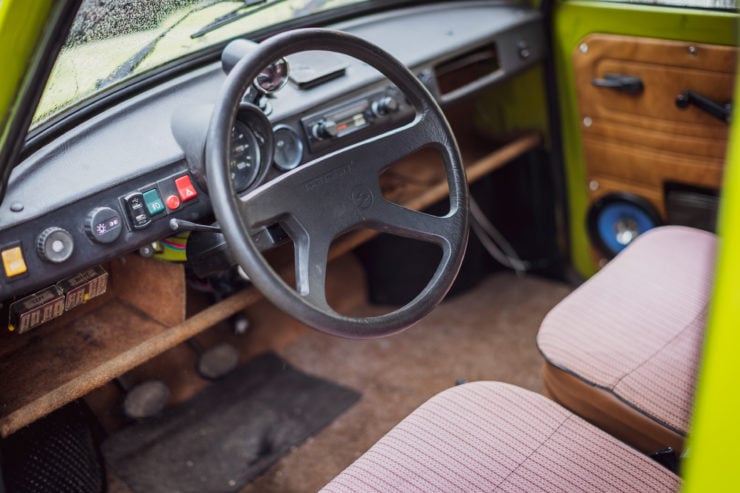
As a slightly more upmarket Trabant 601 S De Luxe model, this car has a better appointed interior than many.
The engineers who designed the Trabant back in the mid-1950s deserve credit for a job well done. They had to design a car that was cheap to mass-produce while using as little steel and other raw materials as possible.
They developed a simple steel unibody chassis with independent front and rear suspension sitting on transverse leaf springs. A body was developed using a material called Duroplast, it’s essentially a close relative of fiberglass that is made up of synthetic resins and pressed cotton fibers.
Inside the somewhat spartan cabin you’d find room for up to five on seats stuffed with horsehair, there was a small trunk in the rear, and up front you’d find a 499cc air-cooled, two-cylinder, two-stroke engine producing somewhere in the region of 18 to 23 bhp.
Upgrades & Legacy
The engine was upgraded over the next few years, first increasing in size to 594cc, then many years later in 1990 it was replaced altogether by a far more modern 1.0 liter four-stroke, four-cylinder engine from Volkswagen.
Over the course of the over three decade long production run almost all parts on the Trabant remained interchangeable – such was the limited development that occurred due to crippling shortages of funds and materials.
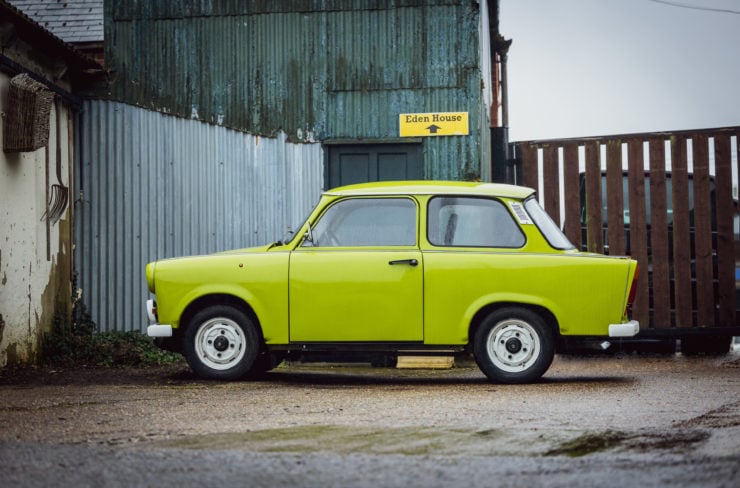
The Trabant is a tiny car by modern standards, partly to use the smallest amount of materials to build and partly because the anemic air-cooled, two-cylinder, two-stroke engine produces just 23 bhp.
Over 3.7 million Trabants would be made, the vehicle became the East German equivalent to the VW Beetle, though it remains far less famous everywhere in the world – except in East Germany of course, where the Trabant will always be king.
The 1978 Trabant 601 S De Luxe Shown Here
The car you see here is a 1978 Trabant 601 S De Luxe, the 601 was the most prolific of all the Trabants with over 2.8 million made from 1963 until 1991.
Many (if not most) Trabants didn’t survive beyond the 1990s, after East Germany opened up to the rest of the world there were so many vastly superior cars that Trabants were often abandoned – as people couldn’t even give them away.
This particular Trabant is one of the survivors, it’s listed as being well-maintained carrying its lime green exterior and its simple cloth interior.
We only rarely see these come up for auction outside of their native Germany, so it’ll be interesting to see what this one sells for when it crosses the auction block with Historics Auctioneers on the 12th of March.
If you’d like to read more about this car or register to bid you can click here to visit the listing.
Above Video: This is an original commercial out of East Germany about the Trabant 601.
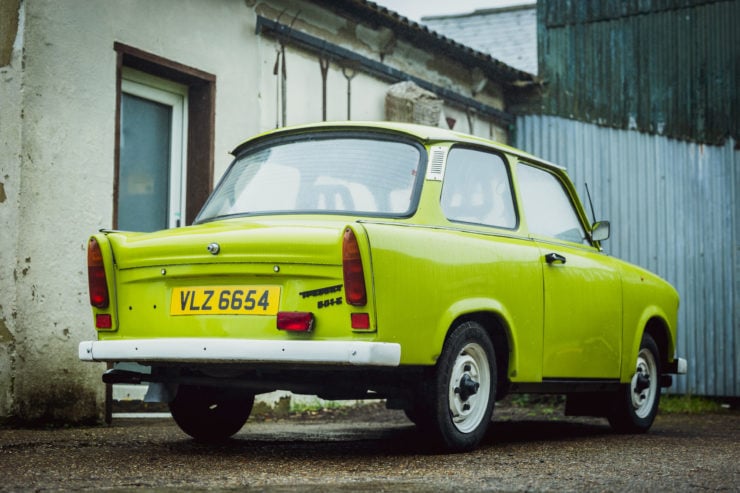
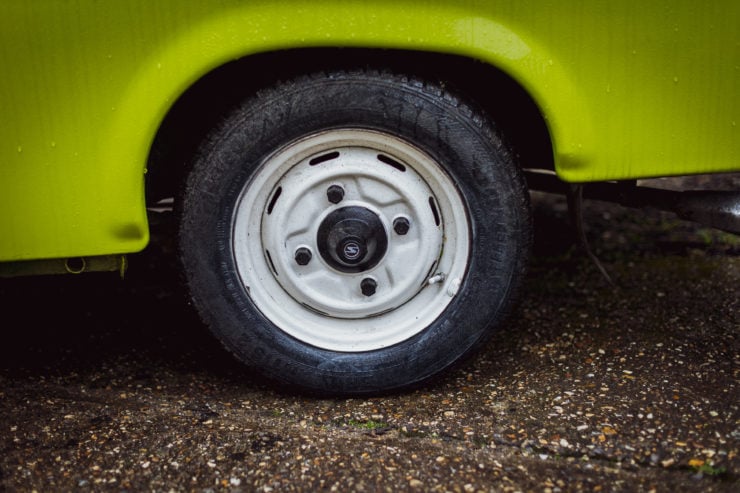
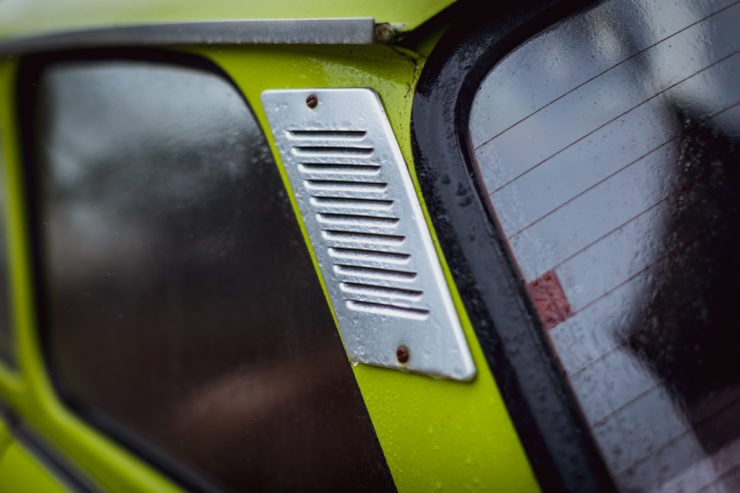
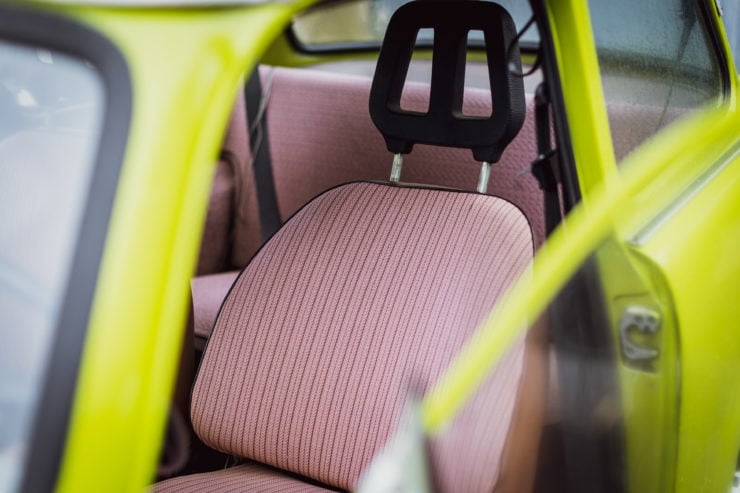
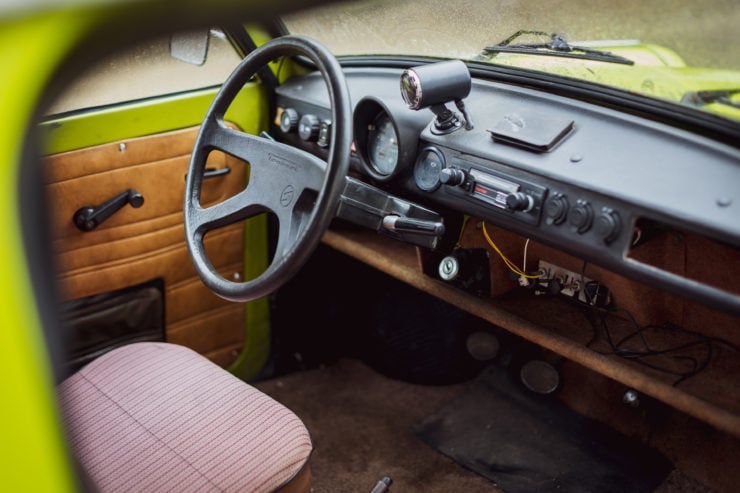
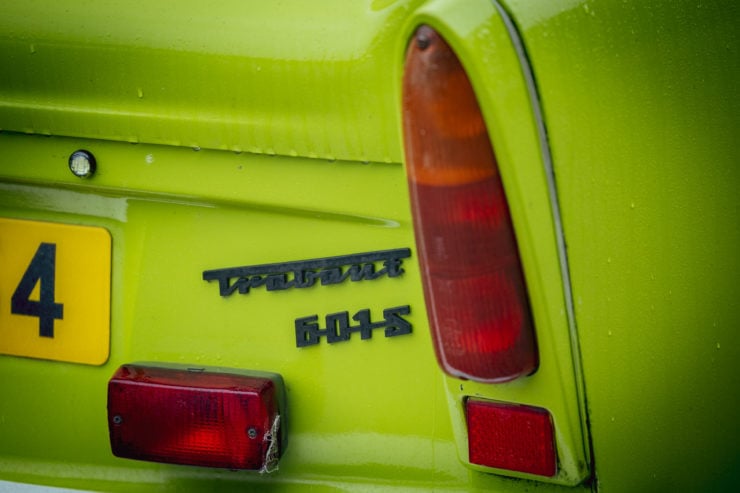
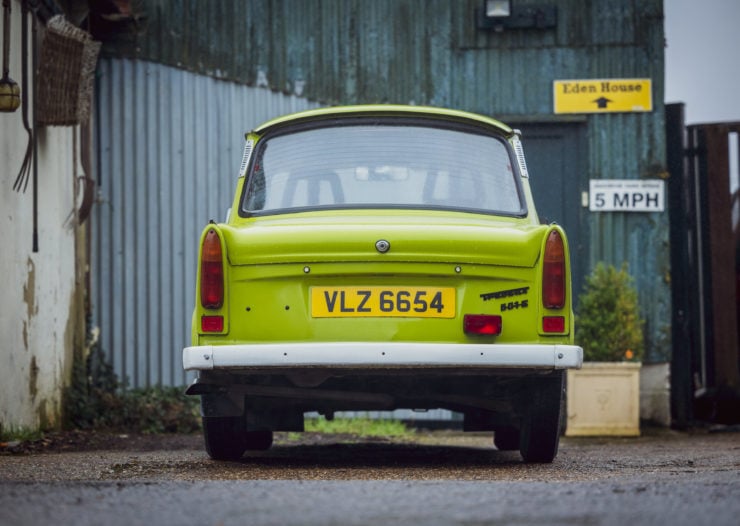
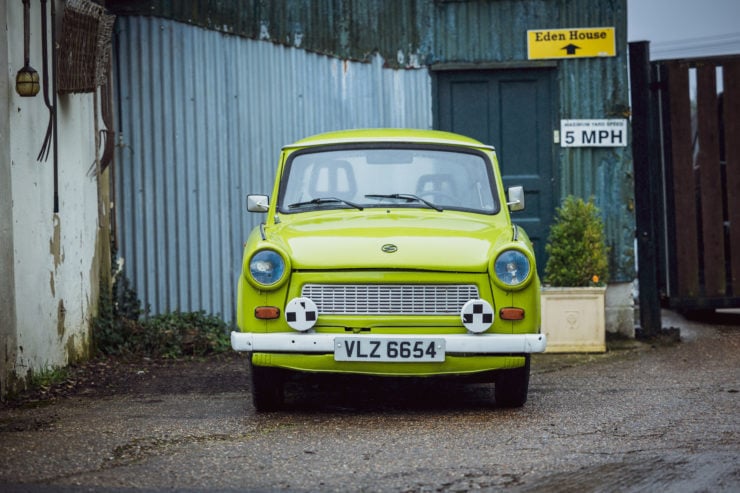
Images courtesy of Historics Auctioneers
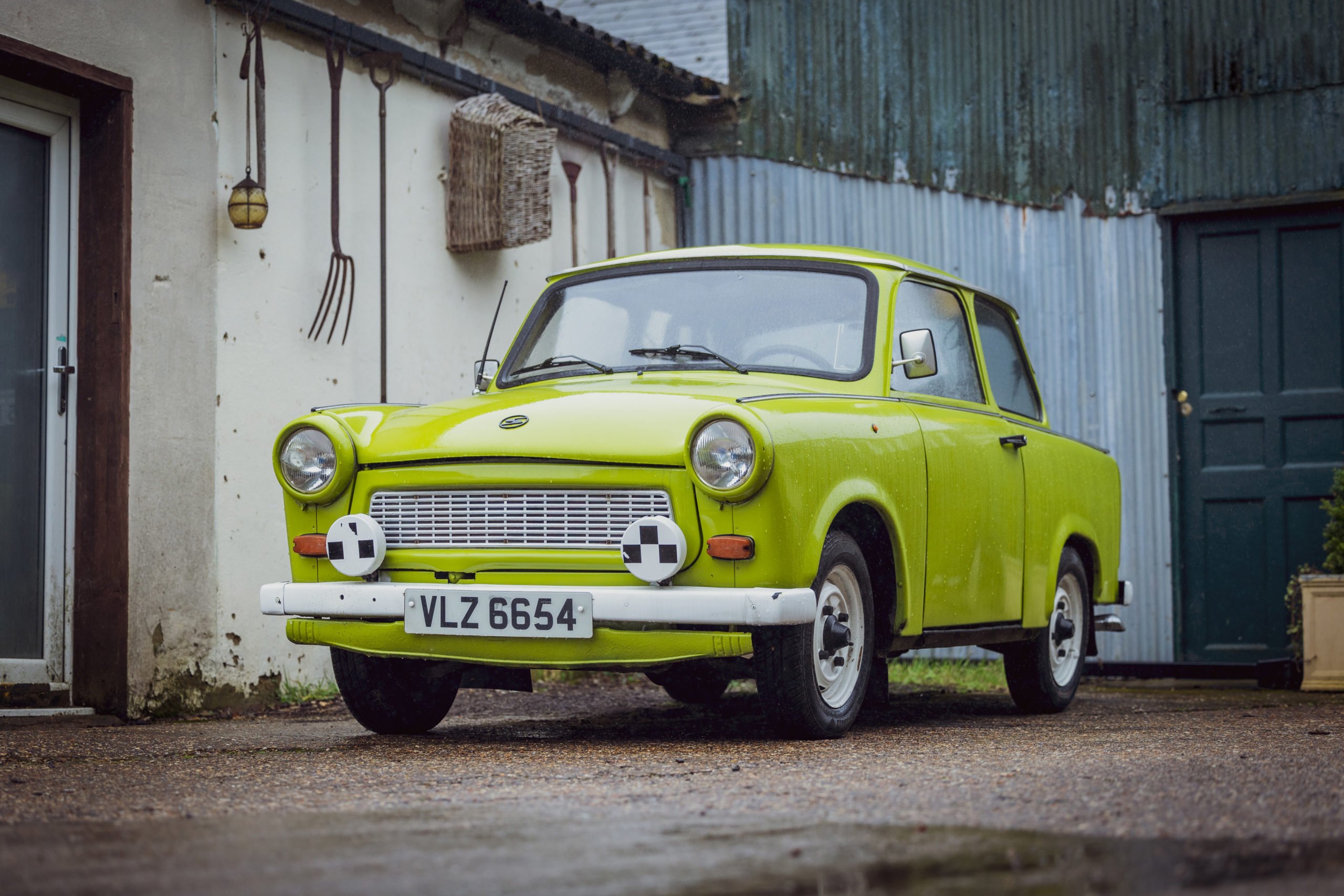
The post For Sale: An East German Trabant 601 – “The Worst Car Ever Made” appeared first on Silodrome.
from Silodrome https://silodrome.com/trabant-car/
via gqrds
Garrett Turbocharger Wall Lamp: $108 USD
This is the Garrett Turbocharger Wall Lamp by Berkay Erdoğan of Auto Decoration. As the name suggests, it’s a wall lamp made from a real (formerly operational) Garrett turbocharger.
- The team at Auto Decoration specialize in making everyday household items from recycled car parts, apart from the turbo lamp they also sell clutch clocks, spark plug coat racks, piston business card holders, and connecting rod clocks.
- Now known as Garrett Motion, the company that builds Garrett turbochargers started out all the way back in 1936 as the Aircraft Tool and Supply Company, founded by John Clifford “Cliff” Garrett in a small one-room office in Los Angeles.
- Though the company is perhaps most famous today for their high-performance automotive turbochargers they actually started out building turbos for aircraft during WWII.
- After the war they diversified into building forced induction systems for a variety of applications including for sewage purification operations and for the heavy vehicles built by Caterpillar.
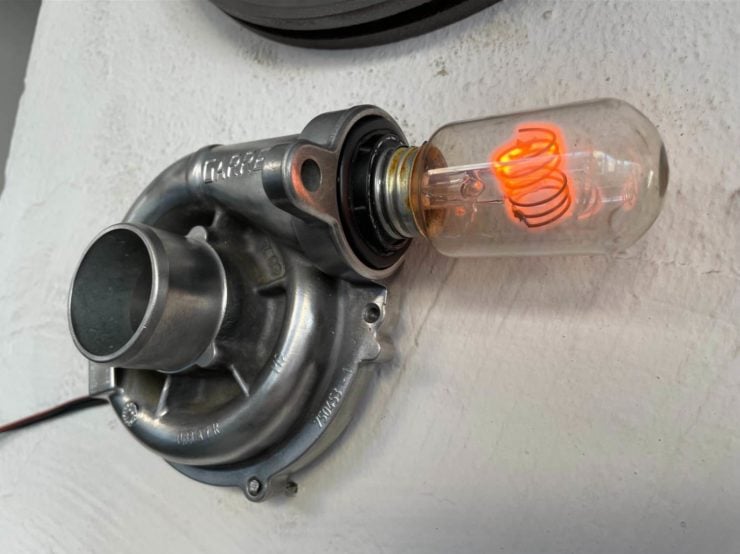
These lamps are designed to be mounted directly to the wall, they make great additions to garages, sheds, and studies – not to mention they’re good conversation pieces.
In 1960 the Garrett T11 automotive turbocharger helped begin the turbo revolution, it was fitted to production cars like the Chevrolet Corvair Monza and the Oldsmobile Jetfire.
Over the years the company remained front and center as turbocharging became mainstream, and today they’re arguably the most famous turbo manufacturers in the world.
Each of these Garrett Turbocharger Wall Lamps is handmade, an original turbo is sourced and prepared, the electrical parts are installed as well as the lightbulb socket.
They ship without a bulb included to you can choose what kind of bulb you need – though Edison bulbs like the one in the display images will almost certainly look best.
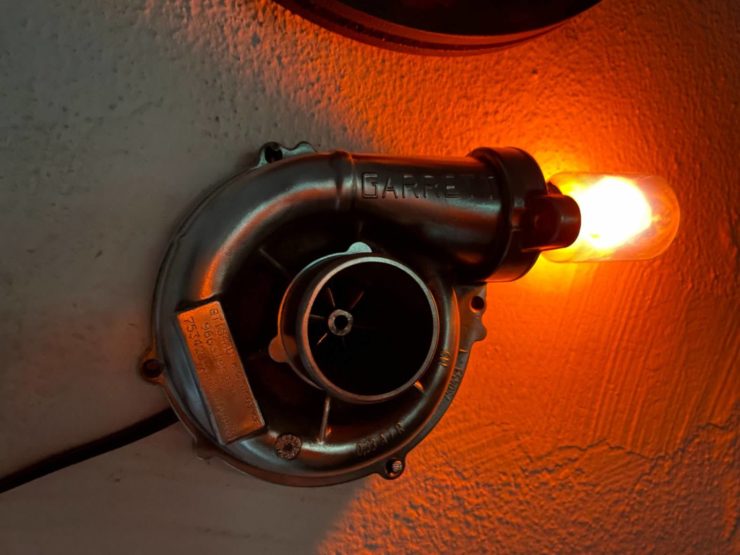
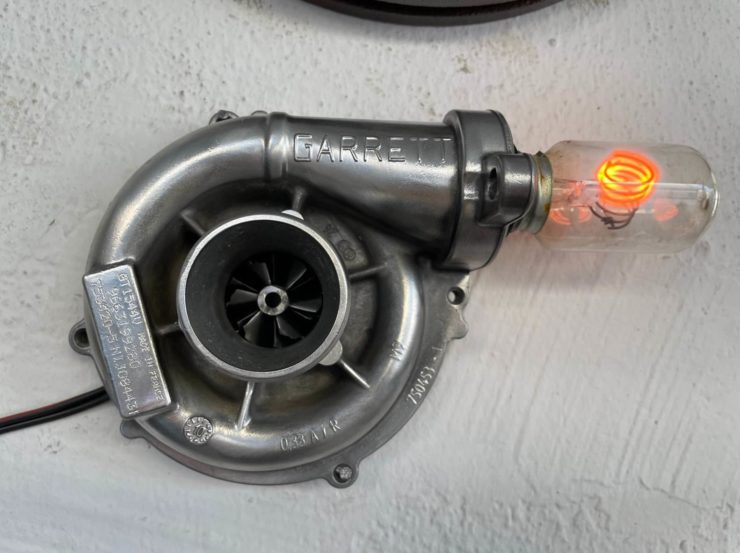
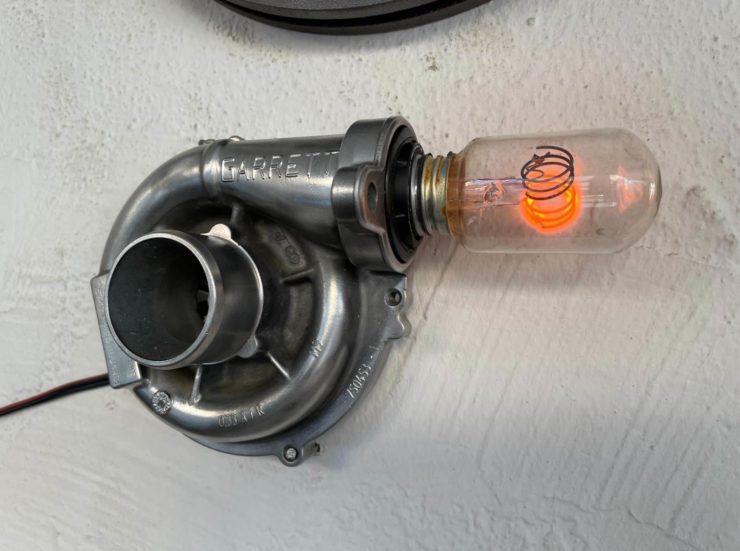
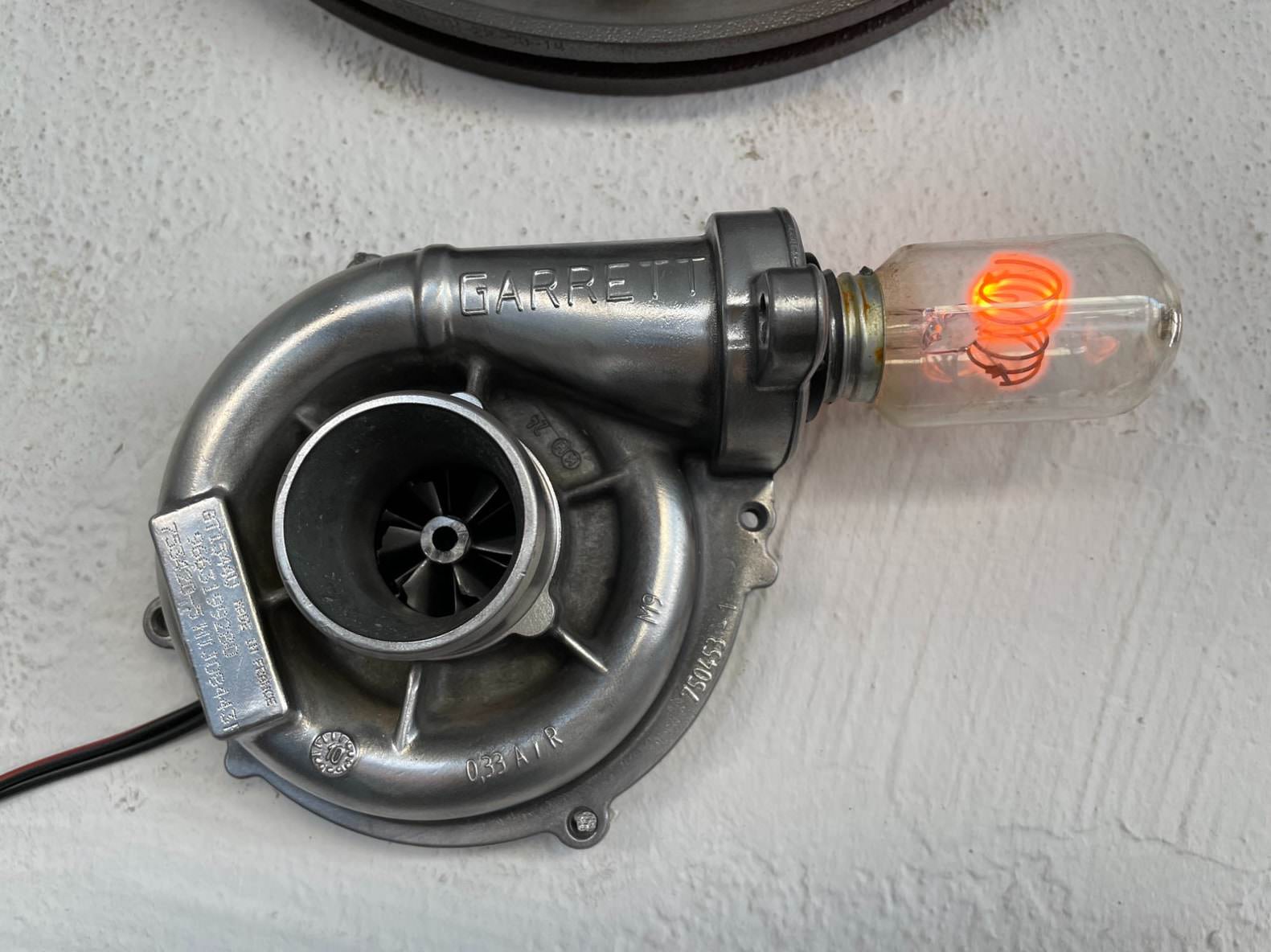
The post Garrett Turbocharger Wall Lamp: $108 USD appeared first on Silodrome.
from Silodrome https://silodrome.com/garrett-turbocharger-wall-lamp/
via gqrds
A Project Car For The Ambitious: 1963 AC Ace 2.6 Roadster
This is all that remains of 1963 AC Ace 2.6 chassis #RS5032, it’s now being offered for sale as a restoration project, albeit an ambitious restoration candidate that will require a substantial amount of work.
The AC Ace is a car that you may never have encountered before but it formed the foundation of one of the most famous sports cars of all time – the Shelby Cobra. Carroll Shelby bought engineless AC Aces and had them shipped to the USA where he fitted Ford V8s to them.
Fast Facts – The AC Ace 2.6
- The AC Ace first appeared in 1953 and it was sold until 1963. The car is most famous for being the platform chosen by Carroll Shelby to build his Shelby Cobra (also called the AC Cobra ), but the Ace was a successful sports car in its own right.
- The AC Ace was developed by influential car designer John Tojeiro, it has a lightweight aluminum alloy body, independent front and rear suspension, and it performed well in period competition, winning its class at Le Mans in 1959.
- A number of different engines were offered over the production life of the Ace, starting with the 2.0 liter AC straight six producing 100 bhp. This was followed by the Bristol straight six producing 120 bhp, and the Ford Zephyr straight six producing up to 170 bhp.
- Today the AC Ace remains a popular classic, though it will probably always be considerably less famous than its V8-engined American cousin built by Shelby and his team.
AC Cars
AC Cars was originally founded as Auto Carriers Ltd in West Norwood, London, in 1901. The company offered a number of both closed and open top cars from 1903 onwards, starting with the AC 20 HP Touring.
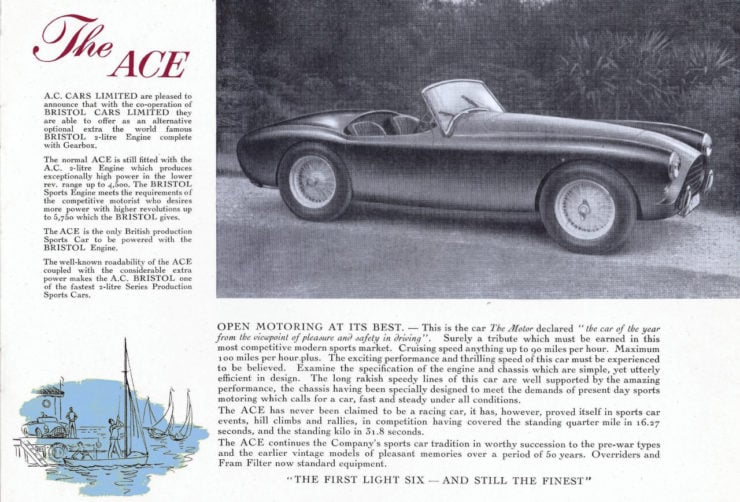
This is a page from a period brochure for the AC Ace, showing what the car looks like when it’s fully assembled. Image courtesy of AC Cars.
AC enjoyed some early successes in the early years of the automobile but by the late 1920s they were struggling, and the market crash of 1929 was the death knell for the company. Car production started again in 1932 with a new range of cars, they fewer than 100 were produced each year.
During WWII the factory was 100% focused on war production and so no cars were made. In the years immediately after WWII the company introduced the Thundersley Invacar Type 57, it was called an “invalid carriage” as it was designed to give mobility back to people who had been injured in the war.
The AC Ace
The AC Ace was introduced in 1953, it was a small, lightweight sports car with an aluminum body, a tubular steel ladder frame chassis, independent front and rear suspension, and a front-mounted 2.0 liter 100 bhp AC engine.
Later engines would offer more power and speed culminating in the 2.6 liter Ford Zephyr straight six producing up to 170 bhp.
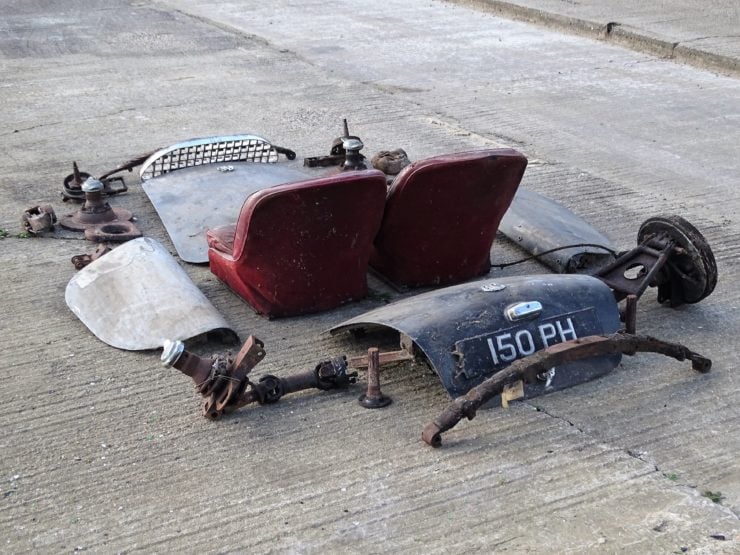
It’s important to note that the parts shown here aren’t all that remains, there is also an engine, gearbox, differential, and a number of other body parts.
The company passed through a number of hands over the following decades, impressively the company is still in production today, building and selling the AC Cobra Series 1 Electric – a 100% battery electric car based on the design of the AC Ace.
The AC Ace Project Car Shown Here
The car you see here is probably the single most ambitious restoration candidate we’ve ever shown on Silodrome.
Interestingly the listing explains that the original chassis was scrapped due to an unfortunate sequence of events – but if offers no more information as to exactly what happened.
The good news is that the original engine, gearbox, differential, bonnet, boot, doors, dashboard, keys, hardtop, and seats all remain, as well as many important internal body panels.
A new chassis will be required of course as well as a number of other new parts, and it’ll be interesting to see what the lot sells for when it crosses the auction block.
If you’re up for the challenge you can click here to visit the listing on H&H Classics. The car is due to be offered on the 16th of March at the Imperial War Museum, in Duxford, England.
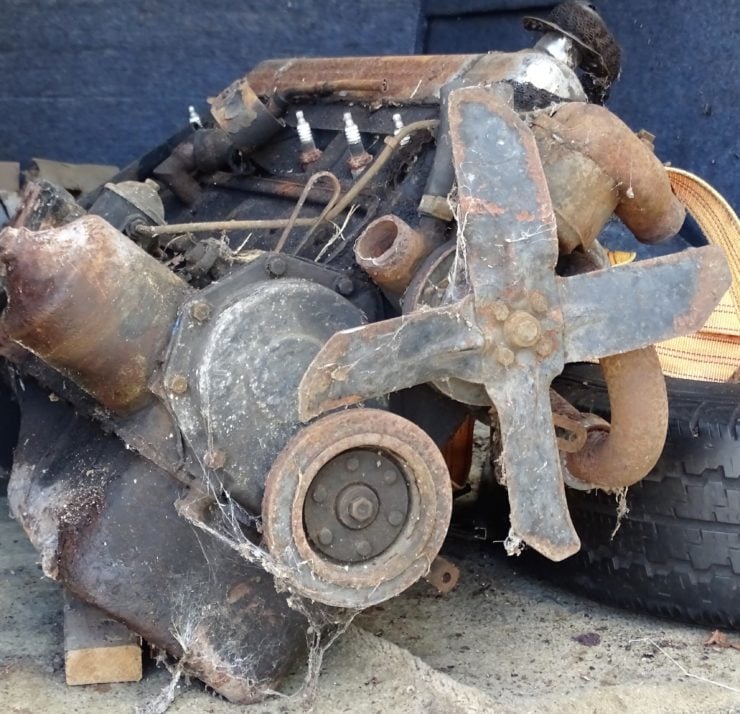
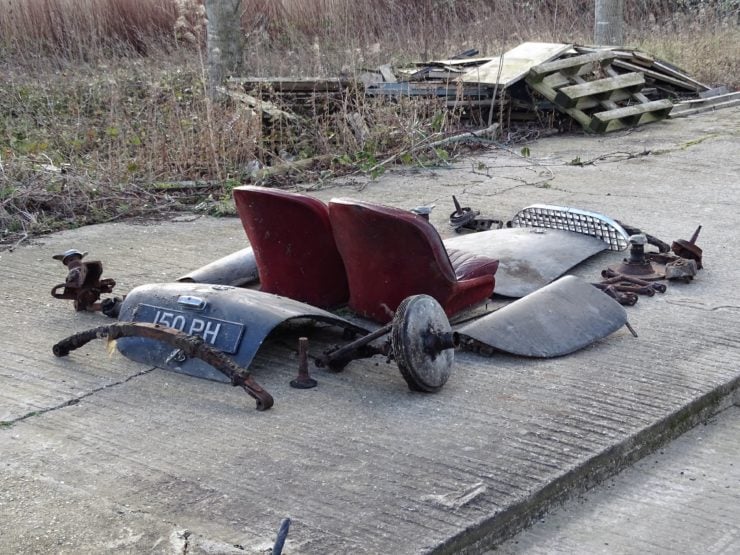
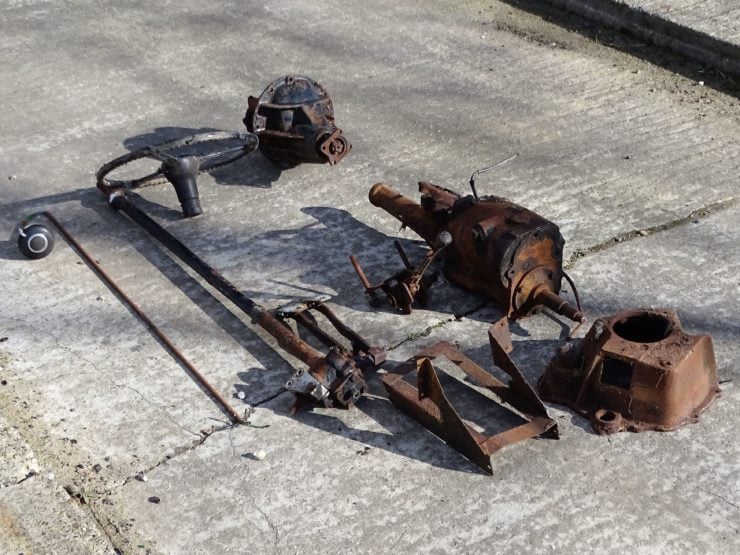
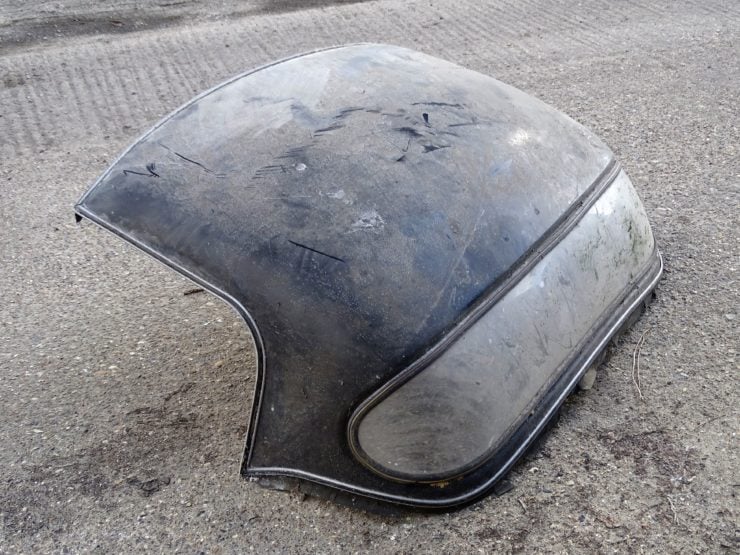
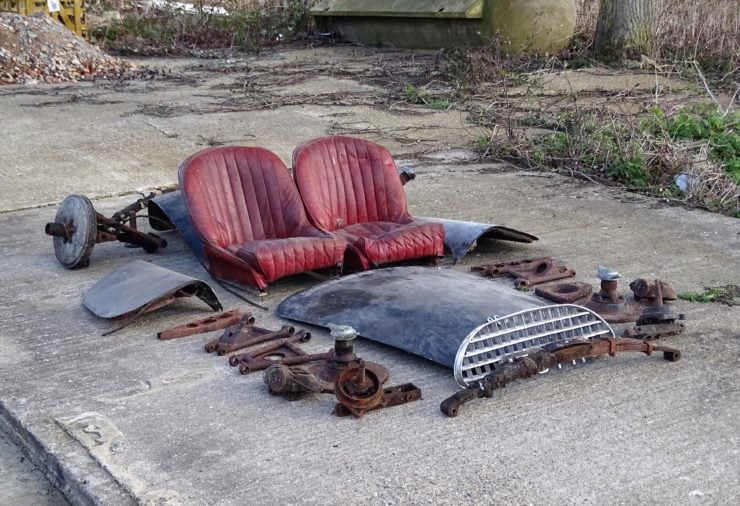
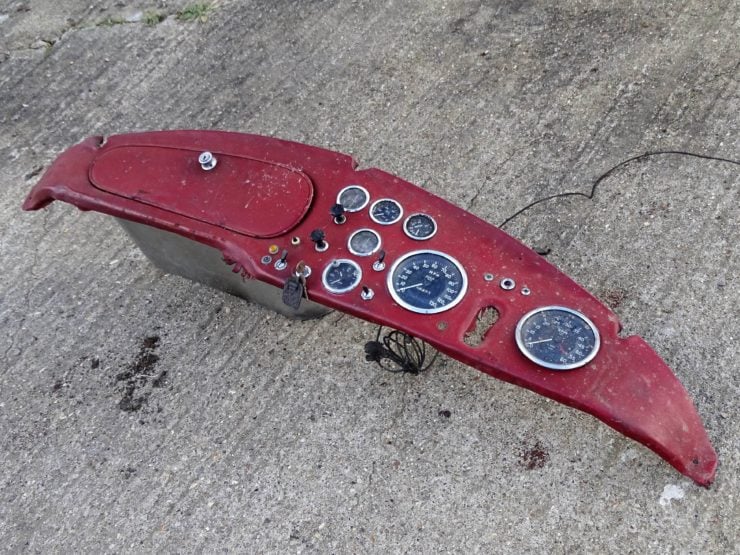
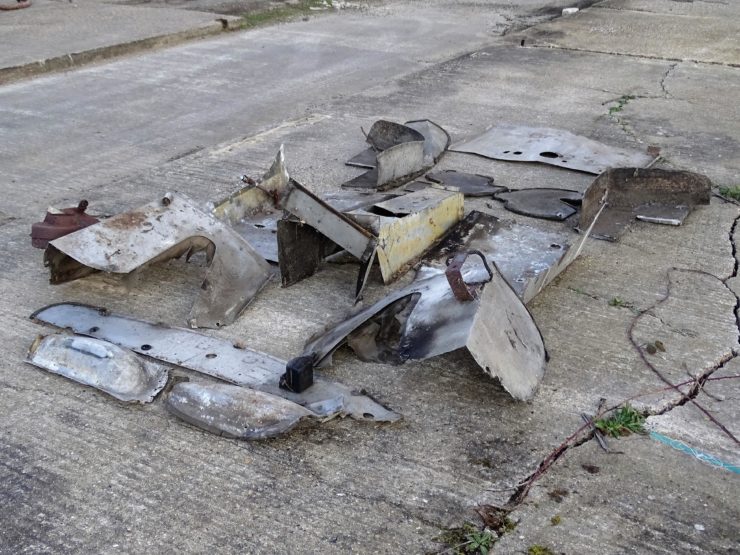

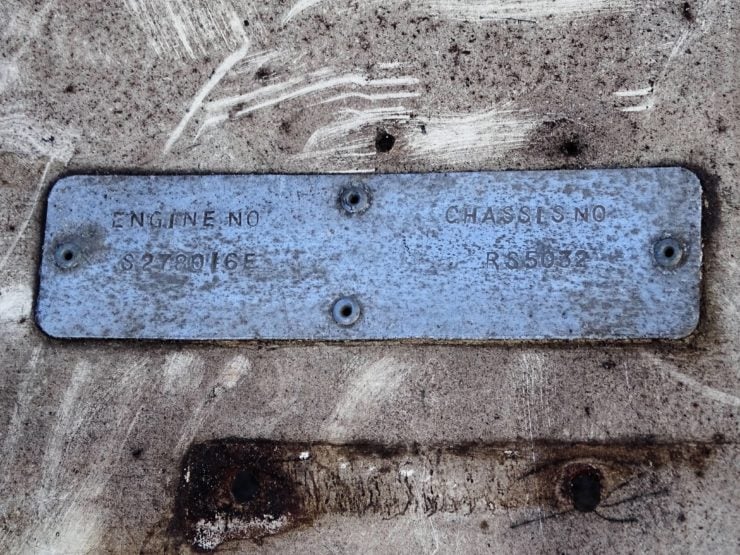
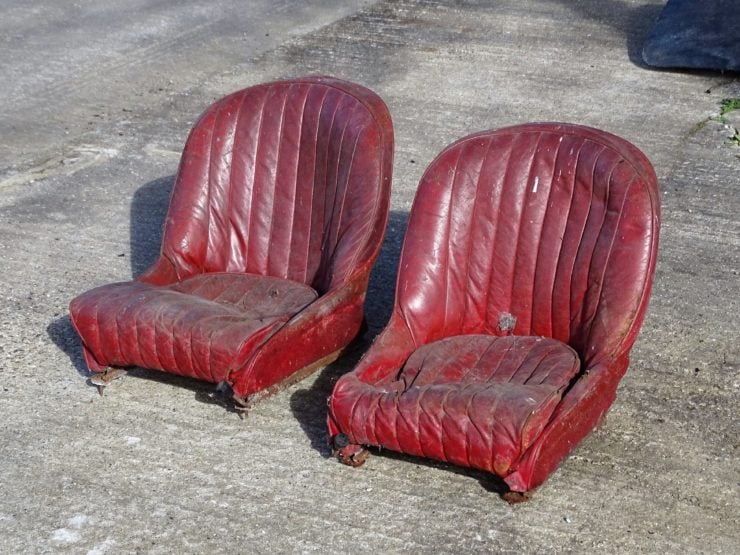
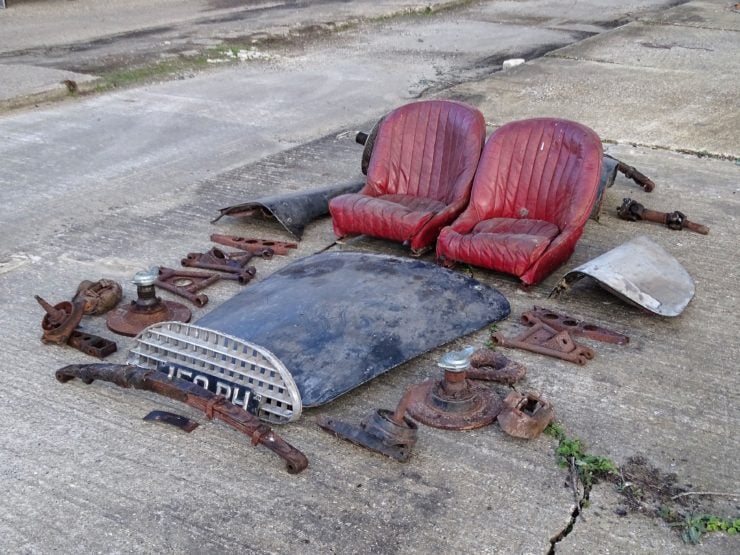
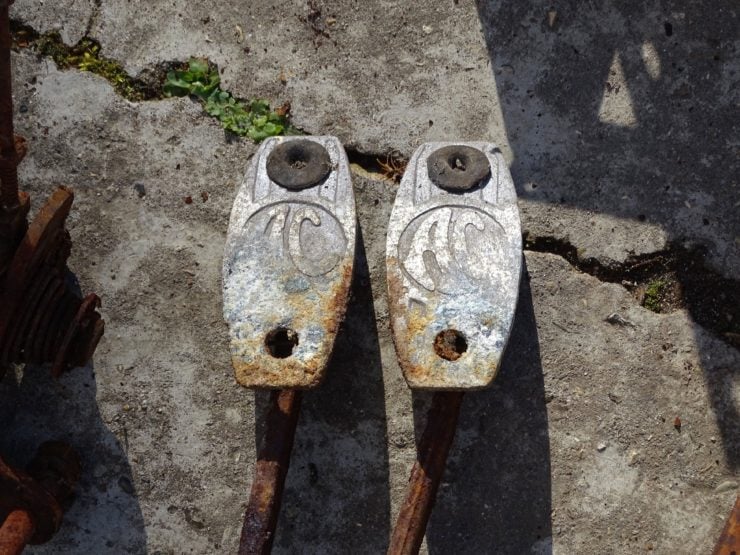
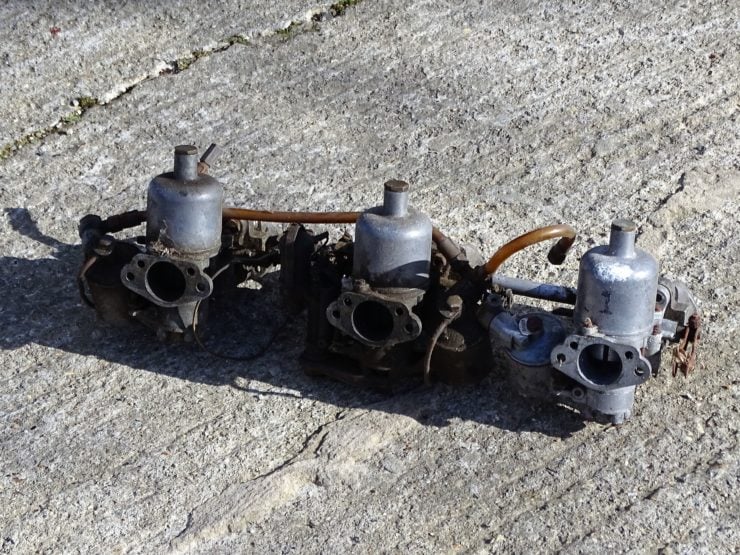
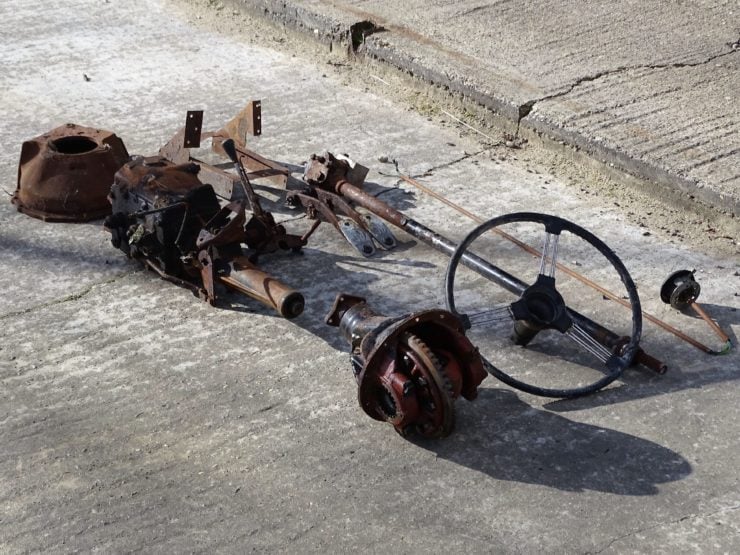
Images courtesy of H&H Classics

The post A Project Car For The Ambitious: 1963 AC Ace 2.6 Roadster appeared first on Silodrome.
from Silodrome https://silodrome.com/ac-ace-project-car/
via gqrds
-
Two-tone 1974 Volkswagen Baja Bug from Tumblr https://78.media.tumblr.com/73c6b6e000f95d3cae9a743a42cac396/tumbl...
-
Lamborghini Miura SVR restored to former glory from Tumblr https://78.media.tumblr.com/f022f7b49224f89bd46...
-
This short film from Ford is focussed on their “Wrist Twist” steering system from 1965 – a way of steering a car that required far less spac...
-
1977 Ford F150 Ranger from Tumblr https://78.media.tumblr.com/42ac160b31ec406cfc8de446480e734c/tumblr_pe82i3V...
-
As Sand Rails first began to appear in the 1960s, they represented the second major evolutionary step for off-road buggies after the more pr...





























